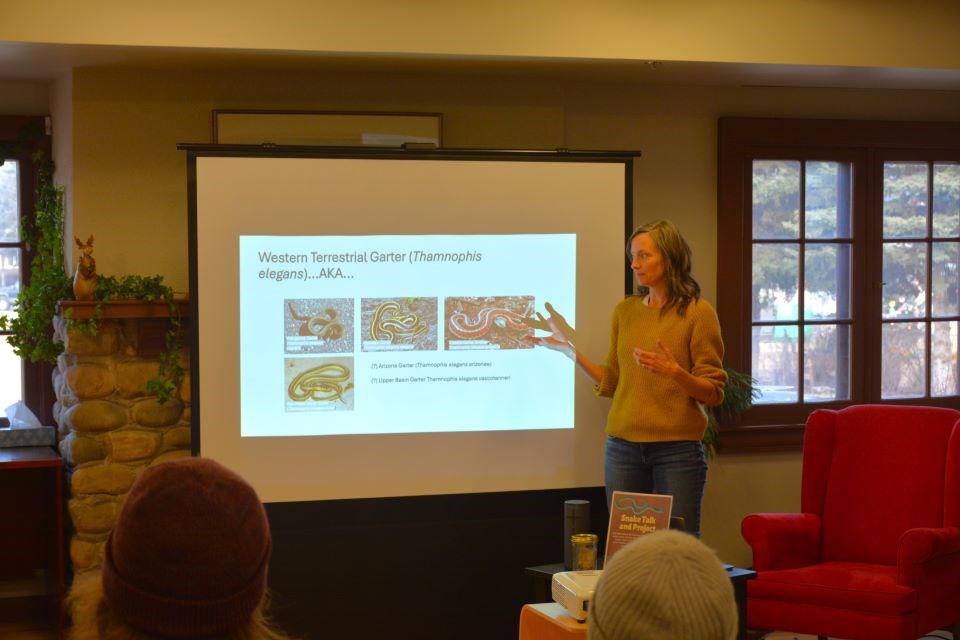When Niki Wilson made her presentation at the Jasper Municipal Library on March 21, she confirmed that Jasper’s favourite and only snake species is the Western Terrestrial Garter Snakes.
Beloved and well-established though it may be, very little is known about the species in Jasper, which prompted Wilson’s talk in the first place.
“A big part of why I wanted to start this project is just so we could get some learning going and maybe even hook in some research at some point,” she said.
“Maybe we can infer some things from this species where it’s studied elsewhere, but one of the interesting things is just how variable it is. When it lives at altitude, it grows more slowly and has different behaviours than when it's living fast and loose in valley bottoms.”
The Western Terrestrial Garter Snake is a widely distributed species. Locally, people who observe them here call them the Wandering Garter Snake, although that is actually one of its five subspecies, each developing according to the geography of the landscape it inhabits.
According to the Alberta Conservation Association’s website, the snake can be identified by several factors including a cream-coloured stripe along the top of its back and each side of its body.
Dark blotches may form a checkered pattern between the stripes. It also has round pupils, and its background is either colour: brown or grey. It can grow up to 100 centimetres long and its bite is mildly venomous.
In the winter, many of these snakes come together to form a hibernaculum.
That is really all that is known about these snakes, except for the areas where the most sightings of them occur. Wilson is collaborating with the library on a community science program. Back in the library’s reading room, people can pin their snake sightings on a map. That is the central hub for what Wilson calls the Citizen Snake Patrol.
She also encouraged people to download the iNaturalist app to their mobile phones.
“The mystery continues, and that is what's great about what we're about to undertake in the community is that now we all have one of these things in our pocket for better or for worse, we might be able to get some data.”
Wilson explained how anyone can help scientists and other naturalists all over the world to get a better idea of the distribution of species, and species are changing over time due to climate change and other factors.
“It's been an incredibly useful tool for scientists,” she said.
“As we get going on the app, we might make some discoveries as a group.”




